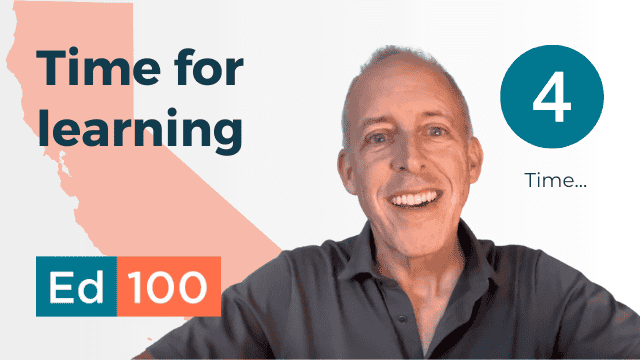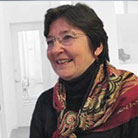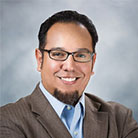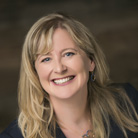
Some children fall behind in school. But many start behind, especially kids from less-advantaged families.
In This Lesson

Why does early childhood education matter?
What is childhood mortality?
When does learning begin?
Does early learning head off learning gaps?
What is the history of kindergarten?
How old are kids in kindergarten?
When do achievement gaps begin?
Is Pre-K education a good investment?
Does the federal government support early education?
How does California compare to other states in early education?
Do other countries provide preschool free?
Do researchers agree about the value of early education?
Are childcare workers paid well?
▶ Watch the video summary
★ Discussion Guide
There are no magic answers in education, but considerable evidence suggests that an ounce of prevention is worth a pound of cure. Achievement gaps start early. Why not head them off before they happen?
Ed100 Chapter Four explores on the role of time in education. This lesson, the first of the chapter, focuses on the role of timing — specifically preschool and kindergarten education. California struggled for decades to get serious about early learning. There are reasons for optimism.
Today, most babies live
In the early days of public education in America, early education wasn't a top priority for many reasons, starting with the fact that nearly half of children died before age five. As recently as 1920, the childhood mortality rate approached 20%. The institutions of public education took shape at a time when most children were cared for by their family until they had the ability to walk themselves to school.
Today, the vast majority of children live, protected by vaccines against childhood diseases. In most developed countries and US states, about 996 out of every thousand children live to at least age five. It makes sense for early childhood to be about learning, not just survival.
Early learning starts at birth
Children are born learners, and those with the opportunity to attend a good preschool begin their life with significant advantages. According to one Stanford study, a language gap between rich and poor children begins in infancy. Stanford psychologists found that 2-year-old children of lower-income families may already be six months behind in language development. K-12 educators can’t do much about this — for them, California’s large achievement gaps come to them as a pre-existing condition.
To head off gaps from the start, it helps to prepare new parents for their role as their child's first teacher. Nurse-Family Partnership programs begin even before birth, working with new mothers. Nurse home visiting programs support families with medical, parenting and family education to give children a strong start.
Achievement gaps start early
Persistent gaps in academic achievement show up prominently in standardized tests. Researchers have demonstrated that these patterns can be spotted very early. According to a high-profile study by the Getting Down to Facts II research effort (GDTFII), California’s achievement gap, one of the biggest in the nation, is not due to failures in K-12 education. Rather, it exists because of “the disproportionate achievement gap when children enter kindergarten.”
Where did the term kindergarten come from?
The first systematic movement for early childhood education began in Germany, where it was called kindergarten. The term stuck. Elizabeth Peabody is generally credited for establishing America’s first public kindergarten in Boston in the 1860’s. She was inspired by a private German school in Wisconsin led by Margarethe Schurz. As mandatory public education took root throughout the U.S. states in the 1910’s, many included a kindergarten program as an optional extension of elementary school. (See Ed100 Lesson 1.7 for more about the history of public education.)
What does kindergarten mean now?
Kindergarten in California generally refers to education for five-year-old children. Though not mandatory, it is provided for free, and an analysis by the California Kindergarten Association estimated that about 93-97% of children enroll in it, whether in a public or private school. The most recent credible estimate (2017) suggests that about 70% of California's kindergarten students attend a full-day program, about 5.6 hours in duration. The other 30% attend a part-day program, about 3.5 hours in duration, shorter than most pre-school programs. Bills to make kindergarten mandatory for all children at age five and full-length were vetoed in 2022.
Is Pre-K education a good investment?
Every dollar invested in high-quality early learning programs can save $7 later on.
A wealth of evidence supports the value of universal early education. Estimates of the long-term return on investment from preschool programs range from a low of 200%-400% (based on a meta-analysis of multiple studies) to 700% or more. Students provided early education are more likely to graduate from high school and college. They are more likely to attend school consistently and less likely to have to repeat a grade of school. They are better socialized in school and less apt to fail.
In addition to the educational and social benefits for children, early education programs also free up time for parents to earn, learn, or make other choices.
How does America invest in early education?
Education and care for children are not mentioned in the Constitution, so they are a function of the states. Some states invest more in the education and well-being of young children, and others invest less.
The federal government provides some support for early education and child care providers, partly through the Head Start program. Federal funds for early education often are structured as block grants that help coax states to take action. Funding for federal grants must be passed by Congress, which can be fickle. In a 2021 report on the economics of child care, the US Treasury reported on the costs, burdens, and benefits of child care and early child education. (The report was issued in the context of the Biden Administration’s Build Back Better plan.)
Early education has received sporadic federal funding in times of crisis. During the COVID-19 Pandemic, Congress provided significant funding for early education on a temporary basis, with bipartisan support. In 2023, this consensus was insufficient to overcome partisan filibusters over the national debt ceiling, leaving thousands of early education providers underfunded.
How does California compare to other states in early education?
Lacking clear federal leadership, states vary widely in their implementation of public education for children prior to kindergarten:
California has struggled for a policy consensus about the best approach to providing more supervised time for children. Is it better to fund more time for early learning or more after-school program time? In California, this choice was personified by two successive governors. Arnold Schwarzenegger, who served 2003-2011, won the office after successfully campaigning for an initiative that funded after-school programs. Under his successor, Jerry Brown, the state pivoted toward early learning. During Brown's administration, California took significant steps toward making education for four-year-olds part of the state's public education system under the name Transitional Kindergarten (TK).
Gavin Newsom, who succeeded Brown, committed to expand and accelerate the rollout of TK:
“California is making a big commitment, and that’s making Transitional Kindergarten accessible and free to all 4 year old kids. That means every child can learn in a nurturing environment with small class sizes to give our young learners the attention they deserve. And when we’re finished with this expansion, California will have the single largest free preschool program in the country, serving nearly 400,000 children.”
— Governor Gavin Newsom, Jan 4, 2023
A big little increase
To implement a TK program safely and effectively requires staffing, facilities, transportation arrangements, community confidence and leadership. It doesn't just happen. To make transitional kindergarten universally available in California will probably take years, with gaps in availabity and quality. Inevitably, some will complain about the expense of adding a year to the school system. It's useful to keep the context in mind: extending the 13-year K-12 system to a 14th year is an increase of less than 8%.
When fully implemented, it is reasonable to expect that TK will bring California's education system a bit closer to matching the best practices of the world's developed nations, which are way ahead in this area.
Which countries invest in early education?
Virtually all developed nations provide universal preschool for 4 year olds. Most provide it for 3 year olds, too.
The short answer: virtually all of them.
Because the benefits of universal early education are massive, most of the world’s developed economies provide universal public education starting by age three. According to the Organization for Economic Cooperation and Development (OECD): “Once children reach the age of 3, early childhood education and care is the norm in the vast majority of OECD countries, with an average enrollment rate of 74%.”
Is preschool a magic answer?
Of course not. Preschool belongs on the long list of things-that-are-not-magic. Educating kids is hard, and there are always ways to mess it up in implementation.
But the cumulative evidence is awfully persuasive. For example, it would make sense for the academic benefits of preschool to kind of wash out over time, making it hard to detect by, say, seventh grade. It isn't. More than a generation's worth of skeptical research on early education suggests that learning is cumulative. Like a snowball on a roll, knowledge and skills tend to grow faster than they melt.
Early education isn't magic — but investing in it is good policy. Failing to provide universal early education is harmful, and tends to have unequal impacts.
Pre-TK teachers in poverty
The quality of early learning programs depends on the support and preparation of the people who work in them. But early childhood care workers are among the lowest-paid workforce in the country. Nearly half of child care workers are in households that participate in at least one public assistance program, such as Medicaid or CalFresh (food stamps). The Center for the Study of Child Care Employment at UC Berkeley finds that policies in all 50 states and Washington, D.C. “shortchange the two million early educators who are shaping the future of 12 million children in childcare and preschool…” California is not an exception.
Updated November 2023
CHAPTER 4:
Spending Time...
-
Spending Time...
Overview of Chapter 4 -
Preschool and Kindergarten
Yes, Early Childhood Education Matters -
Class Size
How Big Should Classes Be? -
School Hours
Is There Enough Time To Learn? -
Time Management in School
Spending Time Well -
Tutoring
When Kids Need More Time and Attention -
Summer School
Time to Learn, or Time to Forget? -
After School Learning
Extending the School Day -
Attendance
Don't Miss School!
Related
Sharing is caring!
Password Reset
Search all lesson and blog content here.
Login with Email
We will send your Login Link to your email
address. Click on the link and you will be
logged into Ed100. No more passwords to
remember!














Questions & Comments
To comment or reply, please sign in .
Carol Kocivar November 30, 2025 at 5:53 pm
Five elements of a good preschool
How parents and educators can gauge preschool quality
1. Classroom atmosphere and design:
2. Teachers:
3. Discipline and Social-Emotional Development:
4. Academics:
5. Safety:
http://hechingerreport.org/five-elements-of-a-good-preschool/
Carol Kocivar October 1, 2025 at 1:42 pm
-- Hechinger Report
Jeff Camp - Founder July 22, 2025 at 11:00 pm
Carol Kocivar April 24, 2025 at 2:43 pm
Transitional Kindergarten analysis by the California Legislative Analyst (LAO):
"Additional Requirements for TK Teachers Scheduled to Take Effect Next Year. Starting August 2025, state law requires TK teachers to have either 24 units in early childhood education and/or child development, a child development permit, an early childhood education specialist credential, or comparable experience in a classroom setting with preschool-aged children. (These requirements are in addition to the credential required for elementary school teachers.) Districts will incur penalties if they do not comply with these requirements." [emphasis added]
Carol Kocivar December 30, 2024 at 1:19 pm
Learning Policy Institue
Between 2021–22 and 2023–24, TK enrollment doubled, from about 75,000 to over 151,000 children. Approximately 59% of eligible 4-year-olds enrolled in TK in 2023–24.
Across publicly funded PreK programs—TK, the California State Preschool Program, and Head Start—California went from serving about 34% of all 4-year-olds to 50% between 2019–20 and 2023–24. Enrollment of 4-year-olds climbed from about 37% to 55% during that time when also considering subsidized child care.
https://learningpolicyinstitute.org/product/progressing-toward-universal-prekindergarten-california-brief?utm_source=LPI+Master+List&utm_campaign=7dfaf94c2d-LPIMC_OctoberUpdate_2024_10_31&utm_medium=email&utm_term=0_-7dfaf94c2d-%5BLIST_EMAIL_ID%5D
Carol Kocivar December 6, 2023 at 3:40 pm
Public Policy Institute Report Oct. 2023
Pre-expansion TK led to earlier identification of English Learner (EL) students and students with special education needs.
Evidence suggests positive social-emotional learning (SEL) outcomes, but only for English- only students
TK does not appear to improve grade 3 and 4 test scores more than other pre-kindergarten options.
https://www.ppic.org/publication/assessing-transitional-kindergartens-impact-on-elementary-school-trajectories/
Jeff Camp - Founder June 13, 2023 at 12:21 pm
Carol Kocivar August 4, 2022 at 1:35 pm
The state 2022-23 Budget includes $100 million one-time General Fund with 2021-22 funds and $550 million in 2023-24 to support the California Preschool, Transitional Kindergarten and Full-Day Kindergarten Facilities Grant Program.
This program’s grant funds may be used to construct new school facilities or retrofit existing school facilities for the purpose of providing transitional kindergarten, full-day kindergarten, or preschool classrooms.
Carol Kocivar August 3, 2022 at 9:08 pm
The state 2022-23 Budget provides $614 million beginning in the 2022-23 school year to support the first year of expanded eligibility for transitional kindergarten, shifting from all children turning five-years-old between September 2 and December 2 to all children turning five-years-old between September 2 and February 2.
Additionally, the Budget provides $383 million to add one additional certificated or classified staff person to every transitional kindergarten class, reducing student-to-adult ratios to more closely align with the State Preschool Program.
Carol Kocivar August 3, 2022 at 9:04 pm
The 2022-23 state Budget invests $475 million for students with disabilities, dual language learners, and childhood mental health
It also invests in Inclusive Early Education Expansion Program and State Preschool Family Fee Waivers.
Carol Kocivar October 19, 2021 at 12:59 pm
Jeff Camp - Founder September 1, 2021 at 11:11 pm
Jeff Camp - Founder May 3, 2021 at 10:33 am
DerekandRebeccasDad November 21, 2019 at 10:57 pm
Jamie Kiffel-Alcheh November 2, 2019 at 9:07 pm
I disagree, perhaps because I also do not agree with the definition of readiness. How are we to tell that readiness does not simply mean readiness to pass standardized tests? From a developmental standpoint, I do not believe that most kindergartners are ready for a full day program. We all want to improve schools and students’ abilities, but I fear that emotional readiness and the value of play are being lost in this race to satisfy standardized tests.
Susannah Baxendale January 17, 2019 at 12:11 pm
Caryn January 17, 2019 at 12:39 pm
Susannah Baxendale January 17, 2019 at 12:07 pm
Caryn January 17, 2019 at 12:23 pm
Jeff Camp August 16, 2018 at 12:25 pm
Carol Kocivar April 8, 2018 at 1:17 pm
Read the report.
Carol Kocivar December 7, 2017 at 10:48 am
"Investing Early: Taking Stock of Outcomes and Economic Returns from Early Childhood Programs "
"With this expanded evidence base, policymakers can be highly confident that well-designed and -implemented early childhood programs can improve the lives of children and their families."
https://www.rand.org/pubs/research_reports/RR1993.html
Lisette October 3, 2017 at 4:23 pm
Carol Kocivar July 19, 2017 at 3:02 pm
Weighing the benefits and costs of universal versus targeted pre-k programs
Carol Kocivar July 1, 2017 at 11:28 am
It found that TK Improves academic skills and engagement at kindergarten entry. More specifically, "The study found that TK gives students an advantage at kindergarten entry on all academic skills assessed. TK students outperformed comparison students on early literacy and language skills, including letter and word identification, phonological awareness, and expressive vocabulary, as well as mathematics skills such as problem solving and knowledge of mathematical concepts and symbols."
Read the report:
Jeff Camp - Founder March 28, 2017 at 3:54 pm
rbrooks January 31, 2017 at 3:13 pm
Carol Kocivar December 27, 2016 at 3:57 pm
https://edsource.org/2016/early-childhood-education-pays-big-dividends-study-says/574210
Read the report: http://heckmanequation.org/content/resource/lifecycle-benefits-influential-early-childhood-program
Carol Kocivar October 28, 2016 at 12:28 pm
* Information campaigns about the importance of early learning
* Pre-school enrollment
* Publicly funder health insurance.
Read the article: https://www.washingtonpost.com/news/education/wp/2016/08/26/low-income-kindergartners-are-closing-the-achievement-gap-reversing-a-decades-old-trend/
Link to the full study: http://ero.sagepub.com/content/2/3/2332858416657343
Carol Kocivar June 20, 2016 at 9:41 am
High-Quality Early Learning Settings Depend on a High-Quality Workforce
Low Compensation Undermines Quality
"According to the National Survey of Early Care and Education (NSECE), 97 percent of center-based early childhood teaching staff are women – many of whom earn such low wages that they qualify for public benefits. (Center-based care includes school- based care, Head Start programs, and child care centers).
These low wages undermine their ability to provide for their own families, as well as their ability to provide children with the high-quality early learning experiences they need to excel in school and in life."
http://www2.ed.gov/about/inits/ed/earlylearning/files/ece-low-compensation-undermines-quality-report-2016.pdf
Carol Kocivar June 12, 2016 at 5:02 pm
Read the the highlights in EdSource:
http://edsource.org/2016/california-lags-in-national-report-on-public-preschool-systems/564161?utm_source=May+13+digest+John&utm_campaign=Daily+email&utm_medium=email
Read the report: http://nieer.org/state-preschool-yearbooks
Carol Kocivar June 10, 2016 at 2:25 pm
There is a lot of support for expanding early learning. Read our blog to find out more...
/a-good-beginning/
Carol Kocivar June 10, 2016 at 2:22 pm
A recent poll from the Public Policy Institute of California indicates an overwhelming majority (68%) of Californians see pre-school as important to K-12 success.
Read more in our blog about efforts to increase support for early learning.
/a-good-beginning/
Albert Stroberg May 1, 2016 at 7:09 pm
Starting Day 1 , engage the kids in speech, conversation, activities, shared experiences. We know kids from parents with graduate degrees have thousands of more words by the start of school than HS grad parents and that gap is rarely closed. And after the first kid through the parent ed system, the second & others are "free"- requiring no further cost by the public sector. Pre School is too late.
Carol Kocivar April 23, 2016 at 3:56 pm
AIR’s findings show that approximately 137,000 3 year olds are not enrolled. The report also includes a snapshot at the county and zip code level from 2014 showing where the unmet need for preschool is most acute.
The policy brief follows the introduction of the Quality Early Education and Development Act of 2016 – AB 2660 (McCarty), which aims to establish a plan and a timeline for California to provide quality preschool opportunities to all children from low-income families.
Find out more:
http://www.earlyedgecalifornia.org/news-media/press-releases/unmet-prek-need.html
Carol Kocivar April 23, 2016 at 3:05 pm
Read it here:
https://www.commonsensemedia.org/kids-action/our-initiatives/the-right-start-commission?utm_source=April+2016+-+Report+Release+-+English&utm_medium=email&utm_campaign=weekly
Carol Kocivar March 16, 2016 at 12:31 pm
Ten Building Blocks that Matter
Drawing on a substantial body of research, the Learning Policy Institute recently published The Building Blocks of High-Quality Early Childhood Education Programs. This brief identifies 10 important elements, or building blocks, of high-quality early childhood education programs as indicated by research and professional standards.
Here is the link: http://learningpolicyinstitute.org/building-blocks-of-high-quality-ece-programs/
Carol Kocivar March 8, 2016 at 4:36 pm
Catch this video seminar on Improving Quality in California's Early Childhood Education System: New Research and Implications for Policy.
http://edpolicyinca.org/events/improving-quality-californias-early-childhood-education-system-new-research-and-implications-policy
The conference was co-sponsored by Policy Analysis for California Education (PACE) and Early Edge California
Carol Kocivar December 5, 2015 at 10:56 am
Here is some research from the American Institutes for Research (AIR):
Their study found that students who attended TK were significantly better able to identify letters and words at the start of kindergarten compared to their peers who did not attend. TK graduates also outperformed their peers on measures of mathematics knowledge and skills, including mathematics problem-solving skills such as counting objects and understanding measurement.
Link to full report:
http://www.air.org/resource/impact-californias-transitional-kindergarten-program-2013-14
Jeff Camp - Founder October 13, 2015 at 12:59 pm
aimeef23 April 27, 2015 at 4:18 pm
Janet L. April 20, 2015 at 6:27 pm
Another important factor though is educating parents on WHY early education is so important. Just telling the families that it's free or affordable is not necessarily going to motivate them to enroll.
ms April 11, 2015 at 11:58 pm
Tara Massengill February 8, 2015 at 11:56 am
Paul Muench January 14, 2015 at 9:03 pm
Carol Kocivar - Ed100 December 4, 2014 at 12:10 pm
"... (A)s was true in 1989, childcare workers still earn less than adults who take care of animals,and barely more than fast food cooks."
Worthy Work, STILL Unlivable Wages: The Childhood Workforce 25 Years after the National Child Care Staffing Study
http://www.irle.berkeley.edu/cscce/2014/report-worthy-work-still-unlivable-wages/
ted lempert April 5, 2011 at 4:13 pm